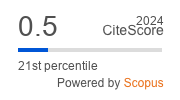Silent hypoxemia in a patient with severe SARS-CoV-2 pneumonia
https://doi.org/10.47093/2218-7332.2020.11.2.87-91
Abstract
Patients with COVID-19 are typically characterized by severe lung injury with the development of acute respiratory failure. However, in some patients, subjective well-being may remain relatively satisfactory for a long time and, despite severe hypoxemia, they do not complain of shortness of breath.
Case report. We observed a 65-year-old man hospitalized with severe SARS-CoV-2 pneumonia, low level of blood oxygen saturation, but at the same time without complaints of shortness of breath. Only as the disease progressed with a decrease in oxygen saturation when breathing atmospheric air (SpO2 ) lower than 85% he began to notice a feeling of lack of air. The patient’s condition worsened and as a result, he died in the intensive care unit from multiple organ failure.
Discussion. This case clearly illustrates one more feature of the course of pneumonia associated with the novel SARSCoV-2 coronavirus and shows that SpO2 measurement is one of the leading objective criterion that allows a doctor to assess the real severity of a patient’s condition with COVID-19.
About the Authors
A. D. PalmanRussian Federation
Alexander D. Palman, MD, PhD, Associate Professor, Department of Hospital Therapy No. 1
8/2, Trubetskaya str., Moscow, 119991
D. A. Andreev
Russian Federation
Denis A. Andreev, MD, PhD, DMSc, Professor, Head of the Department of Cardiology, Functional and Ultrasound Diagnostics
8/2, Trubetskaya str., Moscow, 119991
S. A. Suchkova
Russian Federation
Svetlana A. Suchkova, cardiologist, Cardiology Department for patients with myocardial infarction, University Clinical Hospital No. 1
8/2, Trubetskaya str., Moscow, 119991
References
1. Zhu N., Zhang D., Wang W., et al. A novel coronavirus from patients with pneumonia in China, 2019. N Engl J Med. 2020 Feb; 382(8): 727–33. https://doi.org/10.1056/NEJMoa2001017 PMID: 31978945
2. WHO Director-General’s opening remarks at the media briefing on COVID-19 11 March 2020. URL: https://www.who.int/ dg/speeches/detail/who-director-general-s-opening-remarksat-the-media-briefing-on-covid-19---11-march-2020 (accessed 15.06.2020).
3. Wu Z., McGoogan J.M. Characteristics of and important lessons from the coronavirus disease 2019 (COVID-19) outbreak in China: summary of a report of 72314 cases from the Chinese Center for Disease Control and Prevention. JAMA. 2020; 323(13): 1239–42. https://doi.org/10.1001/jama.2020.2648 PMID: 32091533
4. Glybochko P.V., Fomin V.V., Avdeev S.N., et al. Klinicheskaya kharakteristika 1007 bol’nykh tyazheloi SARSCoV-2 pnevmoniei, nuzhdavshikhsya v respiratornoi podderzhke. [Clinical characteristics of 1007 intensive care unit patients with SARS-CoV-2 pneumonia]. Klinicheskaya farmakologiya i terapiya. 2020; 29(2): 21–9 (In Russian). https://doi.org/10.32756/0869-5490-2020-2-21-29
5. Tobin M.J., Laghi F., Jubran A. Why COVID-19 Silent Hypoxemia Is Baffling to Physicians. Am. J. Respir. Crit. Care Med. 2020. 202(3):356–60. https://doi.org/10.1164/rccm.202006-2157CP PMID: 32539537
6. Wilkerson R.G., Adler J.D., Shah N.G., Brown R. Silent hypoxia: A harbinger of clinical deterioration in patients with COVID-19. Am. J. Emerg. Med. 2020 May 22. https://doi.org/10.1016/j. ajem.2020.05.044 PMID: 32471783
7. Intensivnaya terapiya v pul’monologii [Intensive therapy in pulmonology]. Edited by S.N. Avdeev ed. Vol. 1. Moscow: Atmosphere, 2014. 304 p. (In Russian).
8. Jouffroy R., Jost D., Prunet B. Prehospital pulse oximetry: a red flag for early detection of silent hypoxemia in COVID-19 patients. Crit Care. 2020 Jun; 24(1): 313–4. https://doi.org/10.1186/ s13054-020-03036-9 PMID: 32513249







































